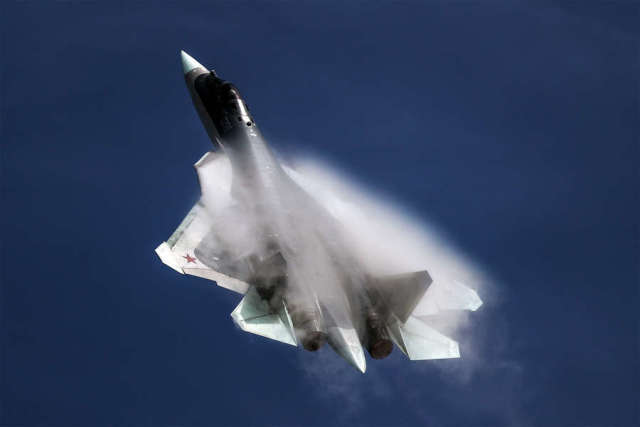How the Su-57 fighter can get an "infinite rocket arm"
During a special operation in Ukraine, the Russian military deployed a link of four fifth-generation Su-57 fighters linked into a "unified information network" in order to destroy air defense facilities. What does the use of "network" tactics mean - in the material of the "Newspaper.Ru».
The Su-57 fighters have passed a new test test in real combat conditions, creating a "unified information network" that made it possible to effectively identify and hit targets, including air defense systems. This was reported by a source of RIA Novosti.
Four aircraft equipped with automatic communication systems with the ability to transmit data in real time, "hacked" the air defense system of the Armed Forces of Ukraine, struck themselves and gave accurate coordinates to ground-based weapons.
The Su-57, according to the NATO classification Felon ("Criminal"), is a fifth-generation multifunctional fighter created by the Design Bureau. Sukhoi within the framework of the comprehensive target program "PAK FA". This is the first and only Russian fifth-generation fighter. The aircraft is designed to replace the S-27 heavy fighter in the Russian Aerospace Forces. He made his first flight on January 29, 2010.
- I told the newspaper. En" military expert, pilot, reserve colonel Alexander Drobyshevsky.
The expert recalled that a similar scheme in tandem with the Su-57 and the S-70 Hunter drone had already been worked out during exercises in 2019.
"Then the unmanned vehicle flew in an automated mode. The interaction between the Hunter and the leader aircraft was being worked out to expand the radar field of the fighter and, accordingly, expand the target designation field for the use of long-range aviation weapons without entering the Su-57 into the zone of conditional counteraction of the enemy's air defense," Drobyshevsky recalled.
According to Sergiy Belousov, a member of the Board of Military Experts, the "network" tactics of using the Su-57 can, in particular, lead to the appearance of an "endless missile arm".
"The peculiarity of the use of long-range weapons today is the lack of an accurate hit guarantee. The aircraft does not enter the enemy's air defense zone in order not to be shot down, but therefore does not have the exact coordinates of the target. To get them, you need to approach the distance of the radar. Now imagine that there is a Hunter ahead of the Su-57. And there's another one in front of him. The chain can consist of three or four UAVs, and of as many as you like. And through this endless chain, the Su-57 can receive any information," Belousov said.
In turn, retired Major General Anatoly Kharchevsky said that not only UAVs, but also other aircraft can take part in this scheme.
"In Syria, the interaction of the Su-57 with the Su-35 was practiced. It was about the possibility of forming a single information space for the entire air group when performing combat missions. At that time, three Su-35 and one Su-57 fighter jets were involved in the "flock". They learned not to launch missile and bomb attacks, namely, they practiced interaction, automatic exchange of information to obtain a general broad picture of both the air and ground situation. And the Su-57 played the role not only of a "collector" of information, but also of transmitting it to other aircraft in a generalized form," the general said.
"The Su-57 has crossed the line of fifth-generation aircraft proper and can be considered a sixth-generation fighter in terms of its potential. Of course, we don't know the details. But, judging by official information, the Su-57 in Ukraine works precisely as a sixth-generation fighter in the form it is presented in the United States. What is now demonstrated in the skies of Ukraine is a huge step in the development of domestic combat aviation and tactics of its use, there have been no similar analogues in the world yet," Belousov concluded.
Victor Sokirko

